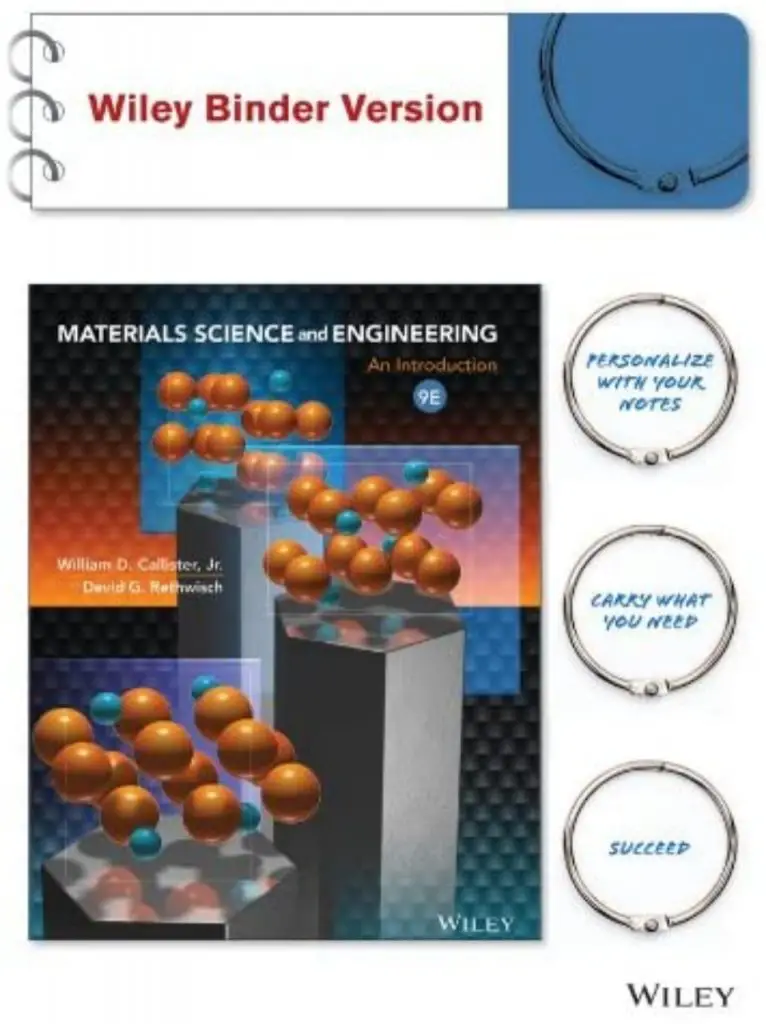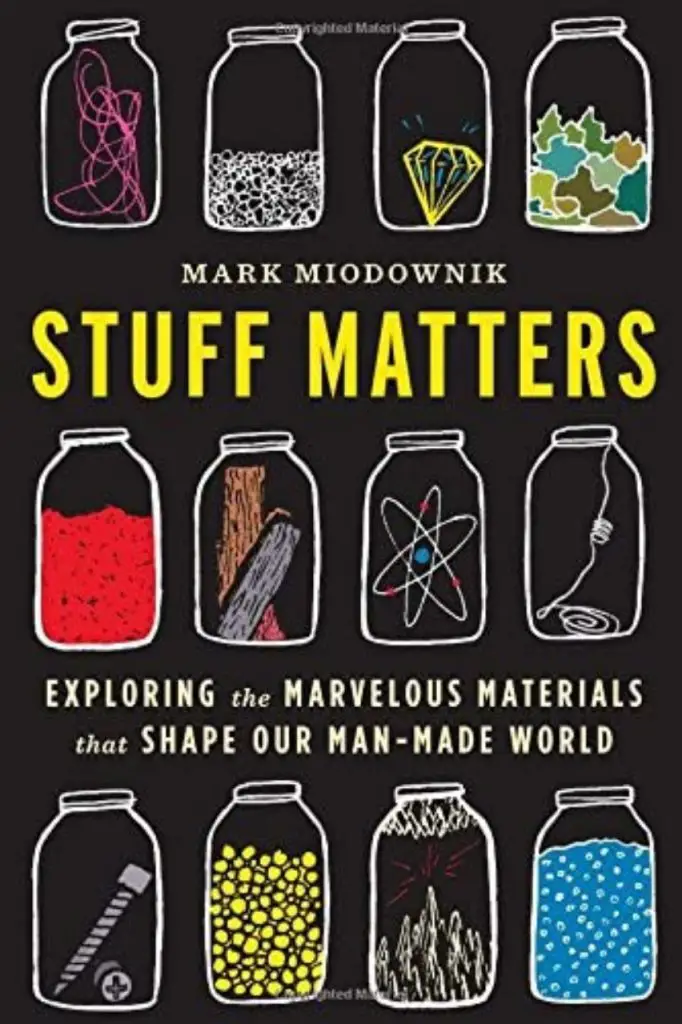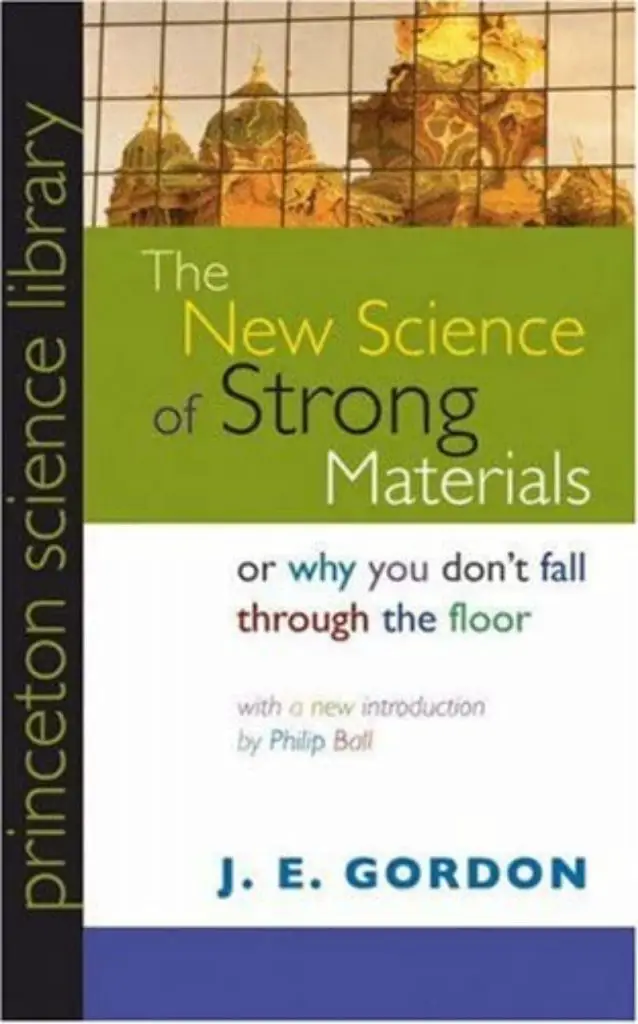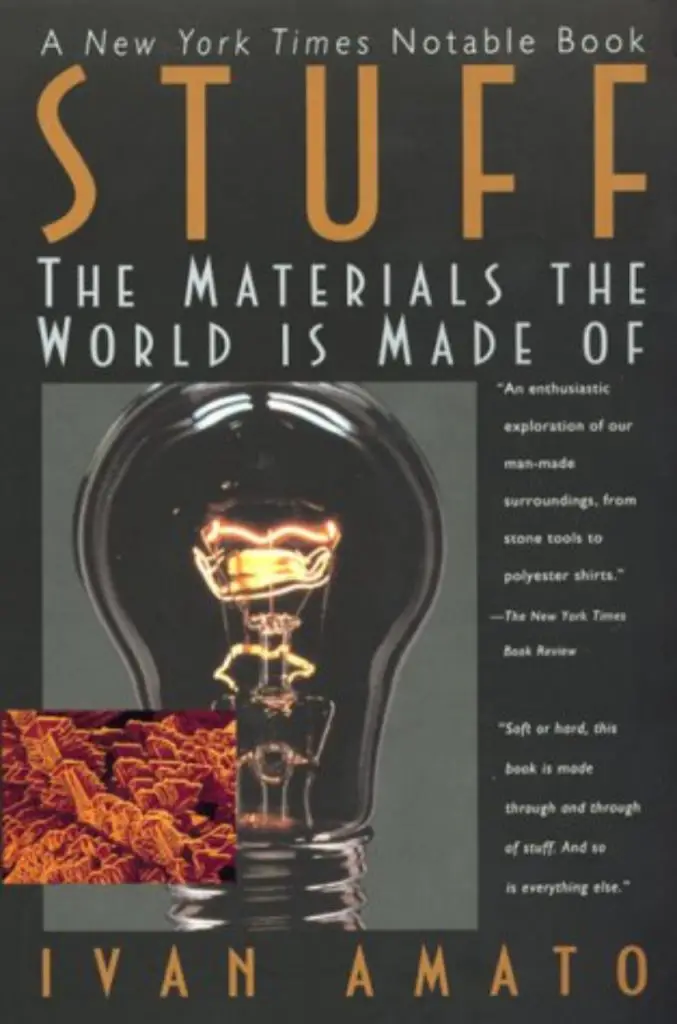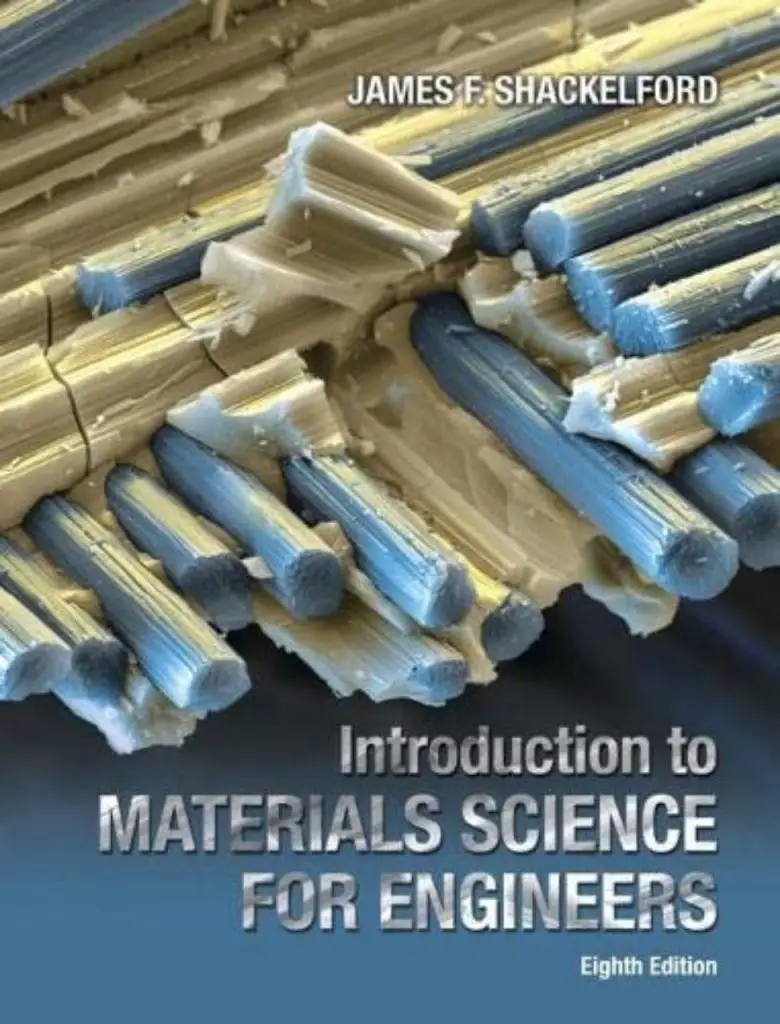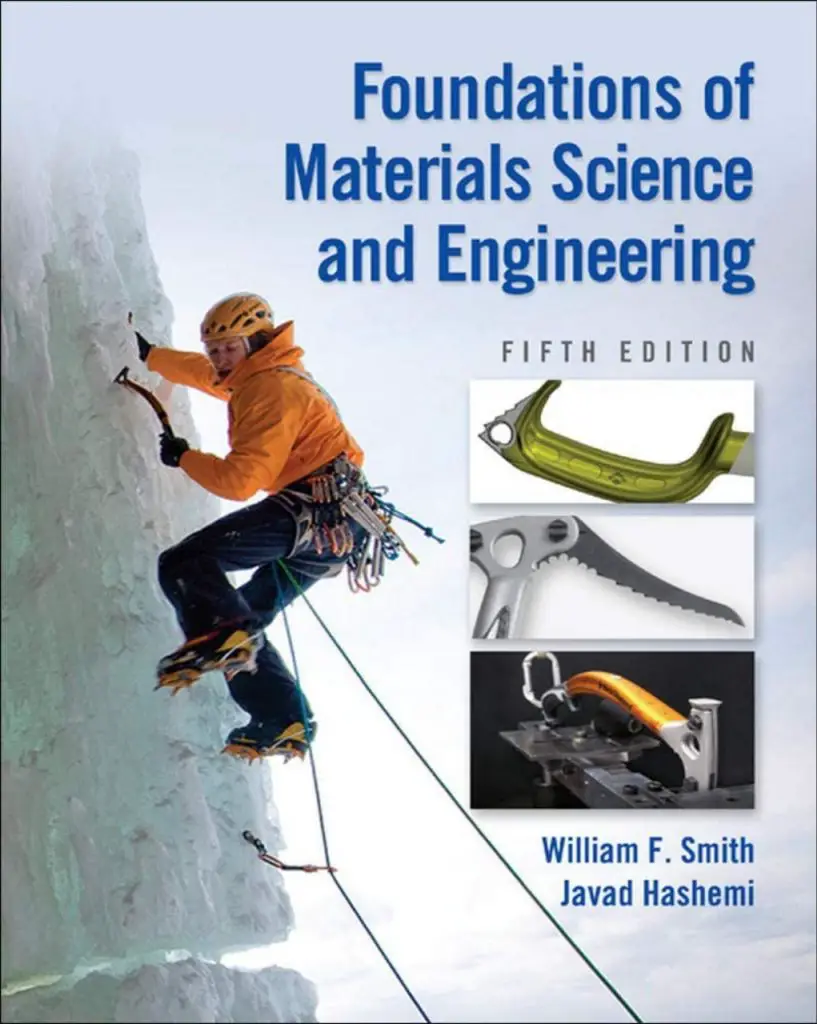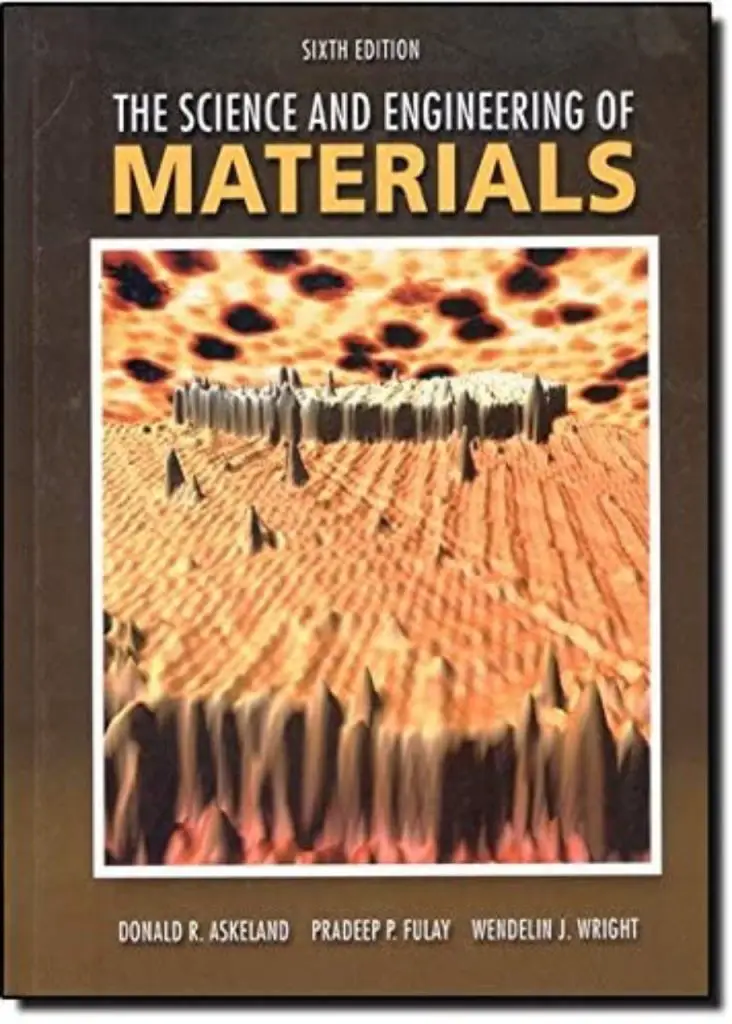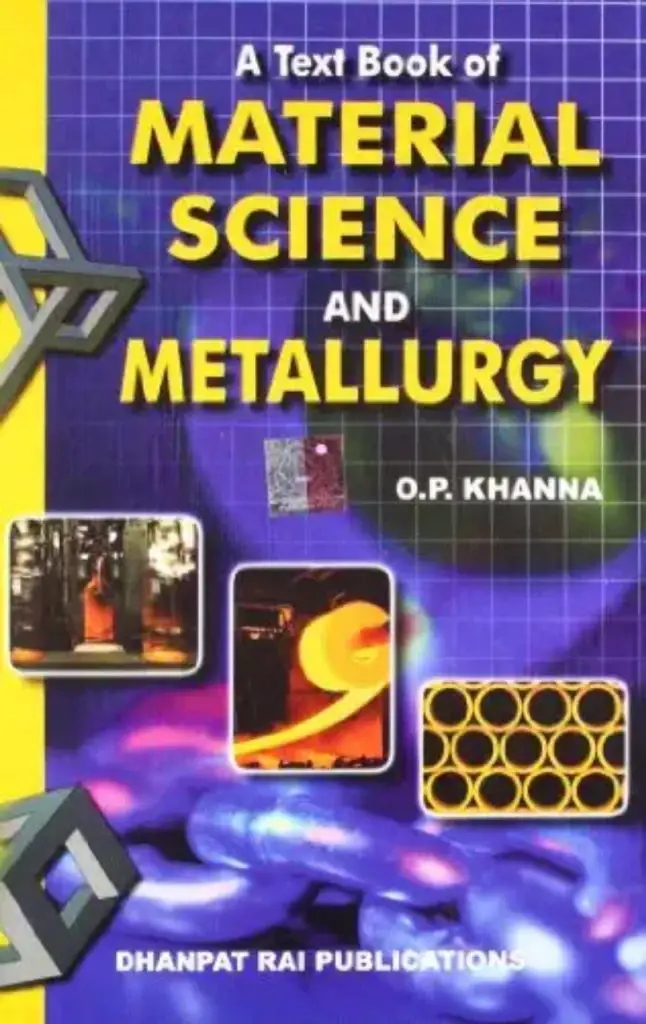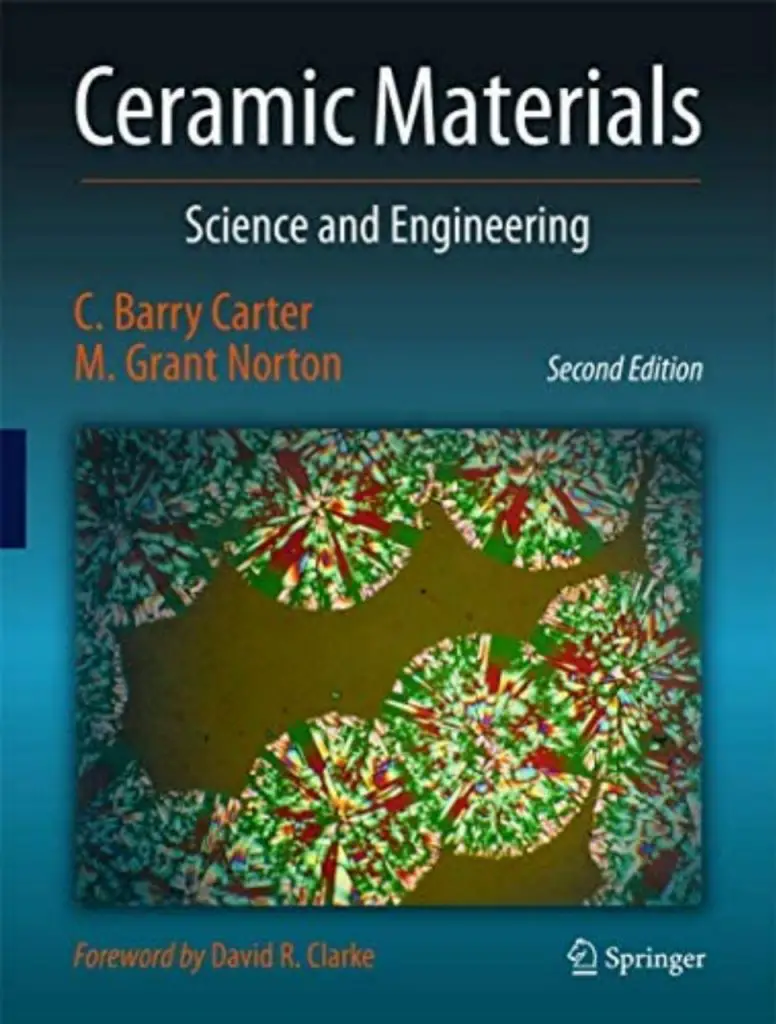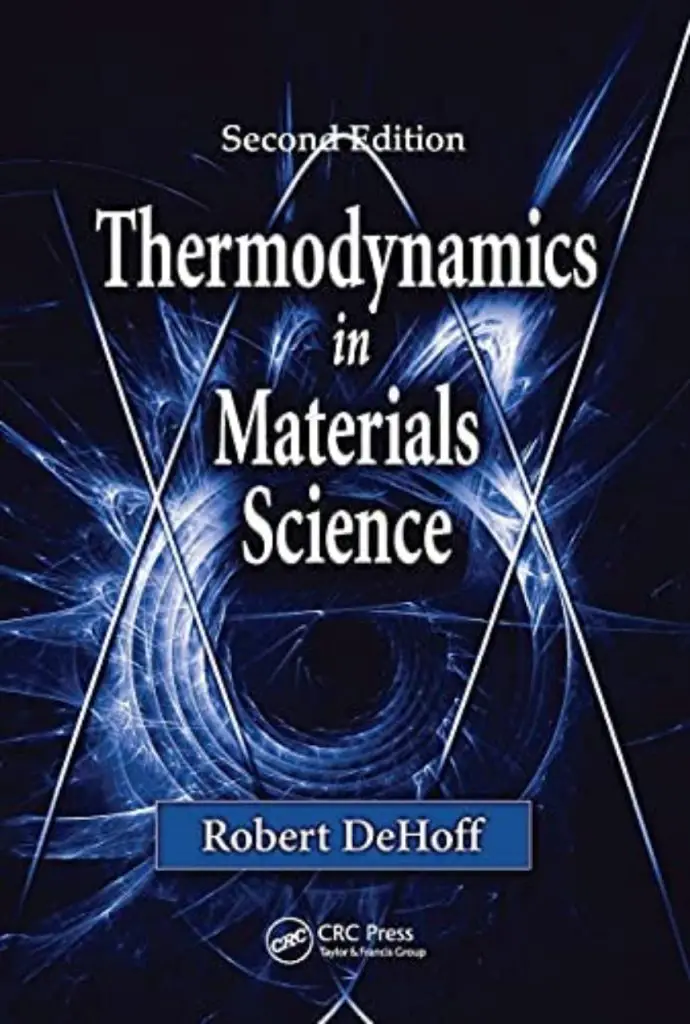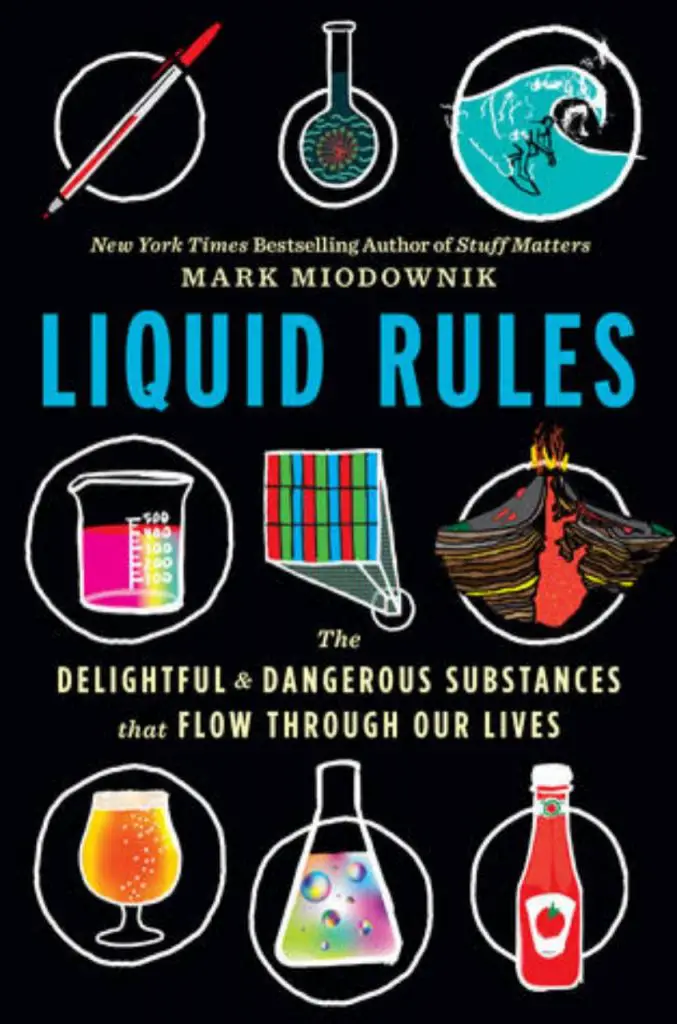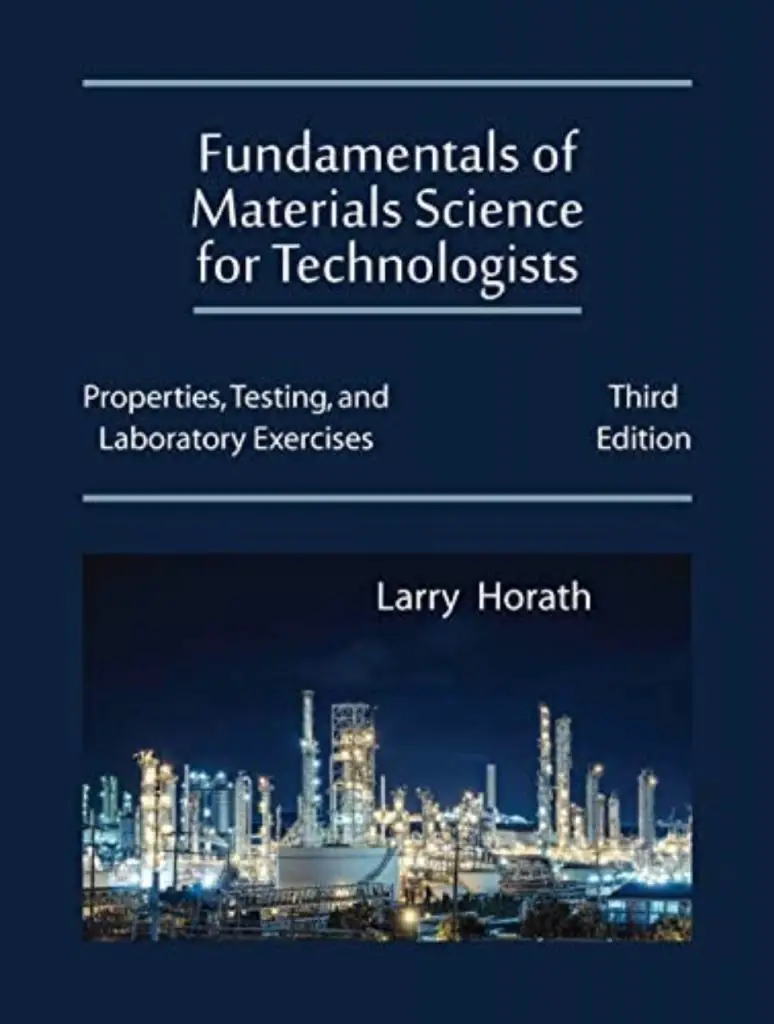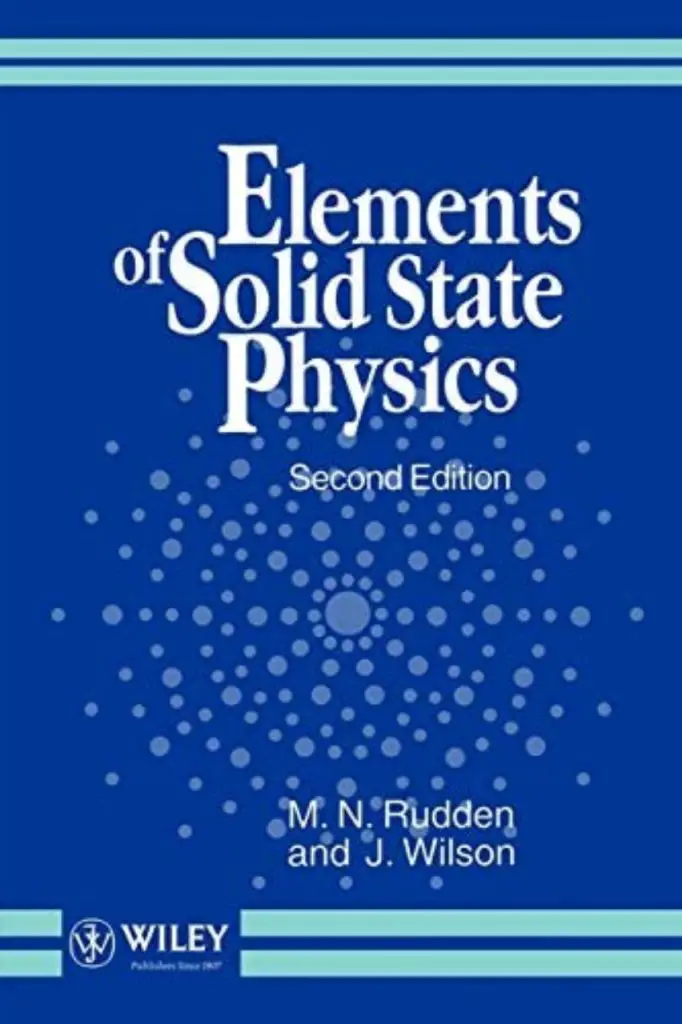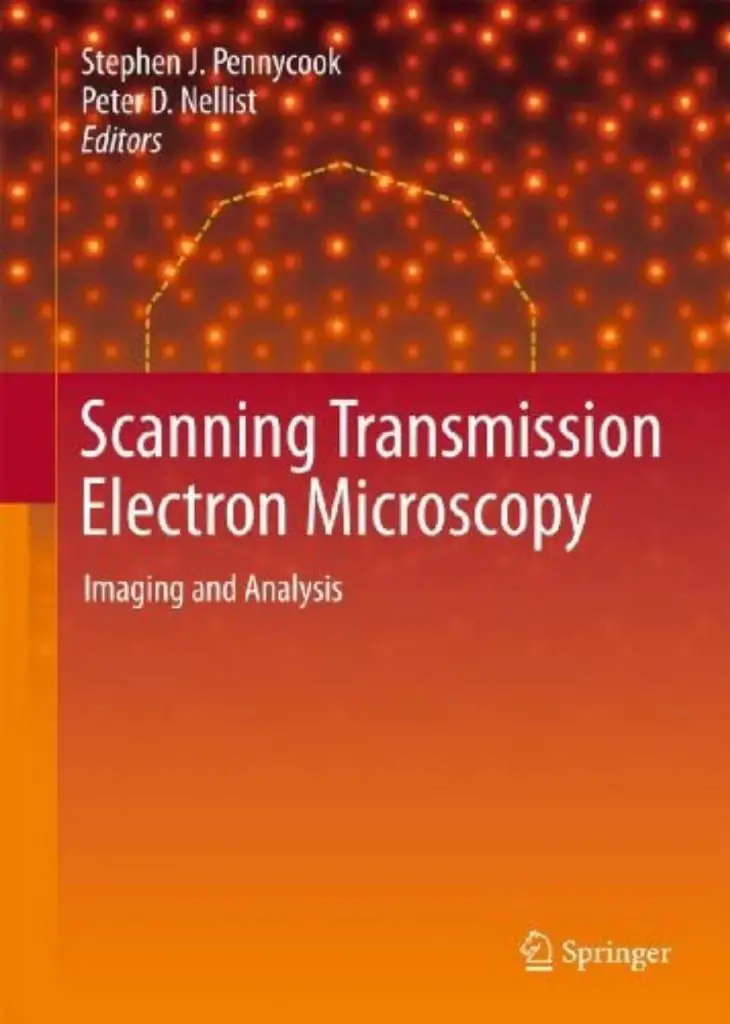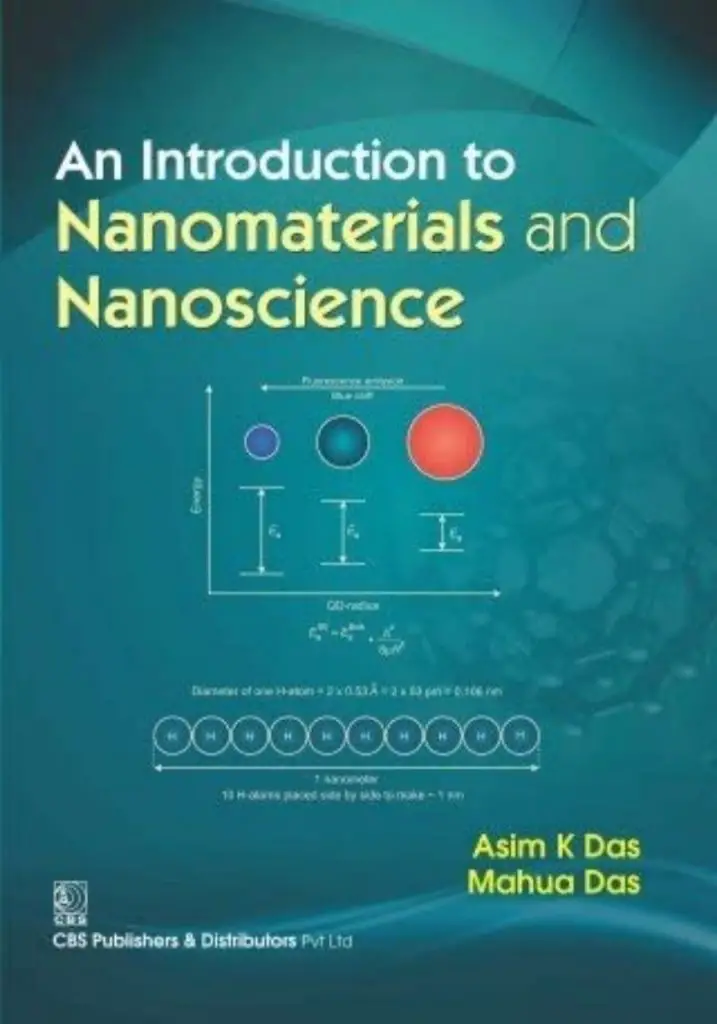Ever wondered what the must-read Material Science Books are? Here is our take.
We’ve compiled the best books for material students to help you navigate through the complex materials science field.
This list helps you gain knowledge whether you are a researcher looking for a breakthrough idea, a student looking for textbooks to get a headstart, or a layperson looking to learn broadly.
These books give you an in-depth discussion on computer science, heat treatment, physical metallurgy, mechanical metallurgy, optic properties of materials, and more.
Let’s dive in!
Table of Contents
Best Material Science Books Overview
- Material Science and Engineering [Get the book]
- Stuff Matters [Get the book]
- The New Science of Strong Materials [Get the book]
- Stuff: The Materials the World is Made [Get the book]
- Introduction to Materials Science for Engineers [Get the book]
- Foundations of Materials Science and Engineering [Get the book]
- The Science and Engineering of Materials [Get the book]
- Material Science and Metallurgy [Get the book]
- Ceramic Materials: Science and Engineering [Get the book]
- Thermodynamics in Material Science [Get the book]
- Liquid Rules [Get the book]
- Fundamentals of Materials Science for Technologists [Get the book]
- Elements of Solid State Physics [Get the book]
- Scanning Transmission Electron Microscopy [Get the book]
- An Introduction to Nanomaterials and Nonscience [Get the book]
Best Material Science Books
Material Science and Engineering: An Introduction by William Callister and David Rethwisch
Intro-Why you should read it
If you are looking for a book that outlines the relationships between the structure and properties of materials, then you have the best in this book.
Summary-What this book is about
This material science book continues to give engineers a comprehensive grasp of the fundamental material types and categories of composites.
The authors further discuss the components of polymer fibers, glass-ceramics, steels, and silicon semiconductors with an emphasis on their material properties, structure, processing, and performance.
This book is good for people who work with materials and people who study polymer science and mechanical engineering.
The book has summaries at the end of each chapter to help you remember important ideas.
Key Takeaways
- You will have a better understanding of materials in everyday life.
Stuff Matters: Exploring the Marvelous Materials that Shape Our Man-Made World by Mark Miodownik
Intro-Why you should read it
This New York Times bestseller is one of the best material science books practitioners read to understand the new materials in the field.
Glass, paper, concrete, and chocolate are some of the materials Mark Miodownik talks about in this book.
Summary-What this book is about
Stuff Matter answers questions young materials scientists ask about materials such as the properties that make glass transparent.
In this book, Miodownik explores materials he encounters daily. The author puts forward an intriguing tale of engineering mysteries that interpenetrate our lives.
Key Takeaways
- You will discover miracles and amazing qualities in “boring stuff”.
The New Science of Strong Materials: Or Why You Don’t Fall Through the Floor by JE Gordon
Intro-Why you should read it
The New Science of Strong Materials is one of the best materials science books you shouldn’t forget from this list.
The text covers scientific problems that are crucial to engineers and related professions.
Summary-What this book is about
Gordon’s book examines some of the most common concerns about materials, including what causes ships to split in half and such questions.
He also explains the techniques modern materials scientists use to solve the emerging problems in material science.
The book also draws from the past to highlight how a materials scientist would solve problems by studying the behavior of materials.
Gordon’s book presents a fascinating approach to material science that you would like.
Key Takeaways
- Isolate problems, then find appropriate solutions for each.
- You’ll find answers to most of the questions you have on materials.
- Material scientists will enjoy learning about materials science.
- The study of the structure materials is key to material science and related fields.
Stuff: The Materials the World is Made of by Ivan Amato
Intro-Why you should read it
Stuff: The Materials the World is Made of is one of the best materials science books. Ivan Amato’s book is featured in our list for its student-friendly prose, clarity, and thorough coverage of the core concepts in the material world.
Summary-What this book is about
Amato explores semiconductors, ceramics, polymers, composites, metals, and many other materials we use in our everyday lives to underline intriguing tales about the material world.
The book reveals secrets, explores astonishing histories, introduces readers to the people who made the amazing discoveries and unveils the future of stuff.
Key Takeaways
- Our universe is made up of amazing materials.
- To understand this structural world, we need to understand the materials in the world.
Introduction to Materials Science for Engineers by James Shackelford
Intro-Why you should read it
James Shackelford designed this text for first-year materials science and engineering students.
Introduction to Materials Science for engineers presents balanced, up-to-date coverage of engineering materials.
Summary-What this book is about
The author discusses engineering materials’ mechanical properties and applications.
Introduction to Materials Science has an online partner–Mastering Engineering–which offers an exciting learning experience. The key concepts highlighted in this book can benefit machine designers, too.
Key Takeaways
- Shackelford’s book is good for people who are new to material science because the author takes a balanced approach.
- Its extensive coverage of key advances in materials science makes it one of the top books on the material world.
- Case studies, practice problems, and examples help you remember the main ideas in this book.
Foundations of Materials Science and Engineering by William Smith
Intro-Why you should read it
The fifth edition offers the best introductory course to material science.
As one of the good books undergraduates can read, the fifth edition of Foundations of Materials Science and Engineering gives a straightforward overview of materials.
Summary-What this book is about
The fifth version of the book includes a completely reworked chemistry chapter and a chapter for homework problems that helps engineering students assess and set learning objectives.
The author uses short explanations, many images, illustrations, and worked-out examples to make you learn in a unique way.
The resources that come with this book include Virtual Labs tutorials, animations, picture files, review questions, PowerPoint files, and a solution manual to improve the comprehension of this text.
Key Takeaways
- The book provides practice questions that reinforce the key concepts covered within the text.
- The authors make your work easy by providing color images and illustrations.
The Science and Engineering of Materials by Donald Askeland and Wendelin Wright
Intro-Why you should read it
This fascinating text is every student’s favorite materials science book.
You need prior knowledge to understand the concepts discussed in the text
Summary-What this book is about
The Science and Engineering of Materials is designed with a focus on advanced students. It examines the three basic engineering principles, including structure, material properties, and processing.
The book has chapter introductions, summaries, and practice problems to help students better understand the book.
Key Takeaways
- As a materials scientist, you need to master the basic principles of materials science to prepare for advanced scientific concepts.
- Use the practice questions to know the areas you should work on.
Material Science and Metallurgy by O.P Khanna
Intro-Why you should read it
Material Science and Metallurgy by O.P. Khanna is a global Materials Science students’ favorite classic. The book is deep, but maintains an easy-to-understand writing style.
Summary-What this book is about
The author utilizes practical examples and a wealth of pictures to underscore the core concepts of metallurgy.
Key Takeaways
- Metallurgy is a key discipline in materials research.
- The book covers mechanical metallurgy, extractive metallurgy, and physical metallurgy.
Ceramic Materials: Science and Engineering by C. Barry Carter and M. Grant Norton
Intro-Why you should read it
Ceramic Materials: Science and Engineering is a good resource for students and experts alike.
We recommend this book for its concise lessons and clear descriptions.
Summary-What this book is about
The authors make a substantial prediction on the future of ceramics. The book also explores the history of such materials.
Ceramic Materials covers mechanical characteristics and the fundamental engineering concepts in ceramics.
Carter and Norton’s book expands on the core concepts of phase equilibria, crystal structures, and more.
Key Takeaways
- You need knowledge of ceramics to have a successful materials engineering career.
- The book offers in-depth information about phase equilibria that materials scientists will find valuable.
Thermodynamics in Material Science by Robert Dehoff
Intro-Why you should read it
Heat has an impact on practically every element of the planet’s life. As a result, it’s only natural to study heat effects on the materials we use daily.
Summary-What this book is about
Thermodynamics in Material Science is designed to help students understand and professionals re-learn the heat properties of materials.
The book uses case studies to discuss the uses of materials and thermochemical data.
Key Takeaways
- Heat influences every aspect of our lives.
- The book gives an unparalleled review of the heat effects on the world.
- The author employs case studies to help understand the heat effects on materials.
- This intriguing text explores the applied knowledge of thermodynamics to materials science.
Liquid Rules: The Delightful and Dangerous Substances That Flow Through Our Lives by Mark Miodownik
Intro-Why you should read it
Liquid Rules is a must-read for anyone looking to learn the mysteries behind liquids.
Written by Mark Miodownik, New York Times bestseller of Stuff Matters, the book implies stories to teach and excite people who don’t know a lot about material science.
Summary-What this book is about
Liquid Rules: The Delightful and Dangerous Substances That Flow Through Our Lives takes readers on a journey through the formless substances of the earth.
The book explains an important applied knowledge of liquids, discussing the scientific perspective of these formless substances that we encounter every day.
Key Takeaways
- The book provides a thorough review of all the liquids on earth.
- Liquid knowledge is as important in material science as in other disciplines.
Fundamentals of Materials Science for Technologists: Properties, Testing, and Laboratory Exercises by Larry Harath
Intro-Why you should read it
The third edition includes a fitting discussion on the principles of material science, giving practical examples.
Summary-What this book is about
Harath integrates concepts and theory with real-world engineering applications in devices, machines, consumer products, and structures.
The book talks about how cement, metals, wood, polymers, elastomers, ceramics, glass, concrete, lubricants, composites, and more work.
Key Takeaways
- This book is a good start for people who want to learn about testing and inspecting manufacturing processes.
- The reference materials and exercises promote a sharp understanding of material science.
- The book is meant to help people learn how to collect and test data.
Elements of Solid State Physics by Michael Rudden and John Wilson
Intro-Why you should read it
Experts and top book review sites such as BookAuthority highly rate this text as one of the best materials science and engineering books.
You’ll enjoy the book’s excellent coverage of material science and electronic or electrical engineering.
Summary-What this book is about
Rudden and Wilson discuss the fundamental principles of solid-state physics and their relevance in the material world.
Solid State Elements Physics utilizes simple models to bring out the basic concepts.
The book covers E—k curves, optoelectronic devices, and superconductivity.
Key Takeaways
- You don’t need prior knowledge of statistical or quantum mechanics to understand this text.
- The author gives students practical examples, clear pictures, and practice questions to help them understand the ideas.
- You need a deeper grasp of materials science engineering to make the right engineering choices.
Scanning Transmission Electron Microscopy: Imaging and Analysis by Stephen Pennycook and Peter Nellist
Intro-Why you should read it
Scanning Transmission Electron Microscopy (STEM) also features in the best material book section of top book review sites, including BookAuthority.
The book delivers in terms of core concepts, simple publication language, and a detailed discussion of the fundamentals of microscopy.
Summary-What this book is about
The renowned editors add a comprehensive discussion of STEM theory and a look into the field’s applications.
Scanning Transmission Electron Microscopy covers instruments, scattering theory, and image formation.
Key Takeaways
- The book explains the measurement and definition of resolution for imaging.
- The book employs real-life examples that are useful in solving material science problems.
An Introduction to Nanomaterials and Nonscience by Asim Das and Mahua Das
Intro-Why you should read it
You should read this book if you want to learn about chemistry, materials science, physics, nanoscience, and other subjects.
Summary-What this book is about
The book covers the basics of nanotechnology development, nanomaterials, and nanoscience.
Key Takeaways
- The book has a lot of information about important topics in materials science, like nanoscience, that you need to learn about.
- Prepare for complex concepts by mastering the introductory information about nanomaterials.
Conclusion
For casual readers, we recommend The New Science of Strong Materials, Stuff Matters, and Liquid Rules.
This list of the best material science books will hopefully help you navigate the complex materials science field.
Tell us your own experience with the books in this category.
References
[1] https://www.thomasnet.com/articles/other/best-materials-science-engineering-books/


